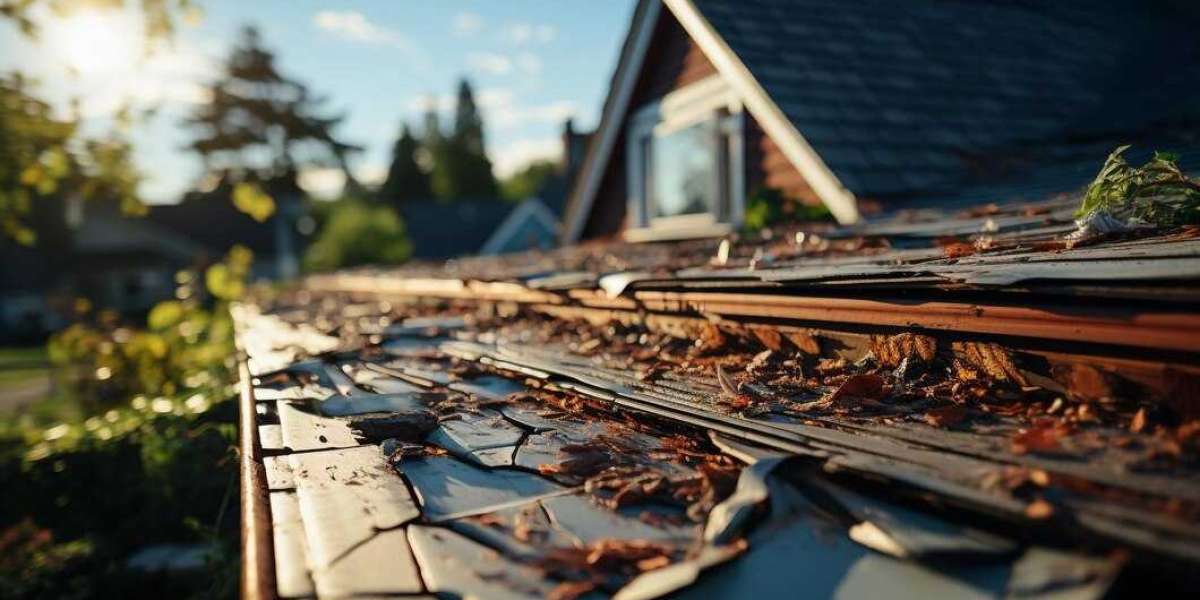Severe storms can leave your home vulnerable, with the roof often taking the most damage. Whether it's high winds, hail, heavy rain, or falling debris, your roof may suffer from missing shingles, leaks, or structural weakening. Prompt storm damage roof repair is essential to prevent further damage and costly repairs. In this article, we will guide you through the process of identifying storm-related roof damage, repairing it effectively, and taking preventive measures to protect your home in the future.
Identifying Storm Damage on Your Roof
After a storm, it’s crucial to inspect your roof for visible and hidden damage. Here are the key signs to look for:
- Missing or damaged shingles – Strong winds can lift and tear off shingles, exposing your roof to further damage.
- Leaks and water stains – Water dripping inside your home or stains on ceilings and walls indicate a compromised roof.
- Dented or cracked shingles – Hail can cause small cracks and dents in shingles, which can lead to leaks over time.
- Damaged flashing – Flashing around chimneys, skylights, and vents may be loosened or bent, creating entry points for water.
- Clogged or damaged gutters – Storm debris can block gutters, leading to poor drainage and water pooling on the roof.
If you notice any of these issues, immediate storm damage roof repair is necessary to prevent further deterioration.
Essential Steps for Storm Damage Roof Repair
1. Assess and Document the Damage
Before starting any repairs, take clear photos and detailed notes of the damage. This documentation will be useful when filing an insurance claim.
2. Contact Your Insurance Provider
Most homeowners' insurance policies cover storm damage. Report the damage as soon as possible, provide the necessary evidence, and schedule an inspection with your insurance adjuster.
3. Perform Temporary Repairs
If there are leaks or exposed areas, use tarps or roofing tape to temporarily seal them. This will help prevent further interior damage until professional repairs are completed.
4. Hire a Professional Roofing Contractor
A skilled roofing contractor specializing in storm damage roof repair can provide a thorough assessment and high-quality repairs. Ensure they are licensed, insured, and experienced in storm-related damage.
5. Repair or Replace Damaged Roofing Materials
Depending on the severity of the damage, your roof may require minor repairs, shingle replacements, or a full roof replacement. Professionals will ensure all compromised areas are properly fixed.
6. Inspect the Attic and Insulation
Check the attic for water damage, mold growth, or insulation issues. If moisture has entered, it’s essential to address it to prevent long-term problems.
Preventing Future Storm Damage
While you can't stop storms, you can take measures to minimize future damage:
- Schedule Regular Roof Inspections – Have your roof checked annually to catch minor issues before they escalate.
- Upgrade to Impact-Resistant Shingles – Stronger materials can help withstand severe weather conditions.
- Trim Overhanging Trees – Prevent branches from falling onto your roof during storms.
- Maintain Your Gutters – Clear gutters regularly to ensure proper drainage.
- Reinforce Flashing and Seals – Secure weak points to prevent leaks.
Conclusion
Investing in timely storm damage roof repair is crucial for protecting your home from further structural issues and financial loss. By identifying damage early, working with experienced roofing professionals, and taking preventive measures, you can extend your roof's lifespan and keep your home safe from future storms. Don’t delay—inspect your roof today and ensure it remains strong and secure.











